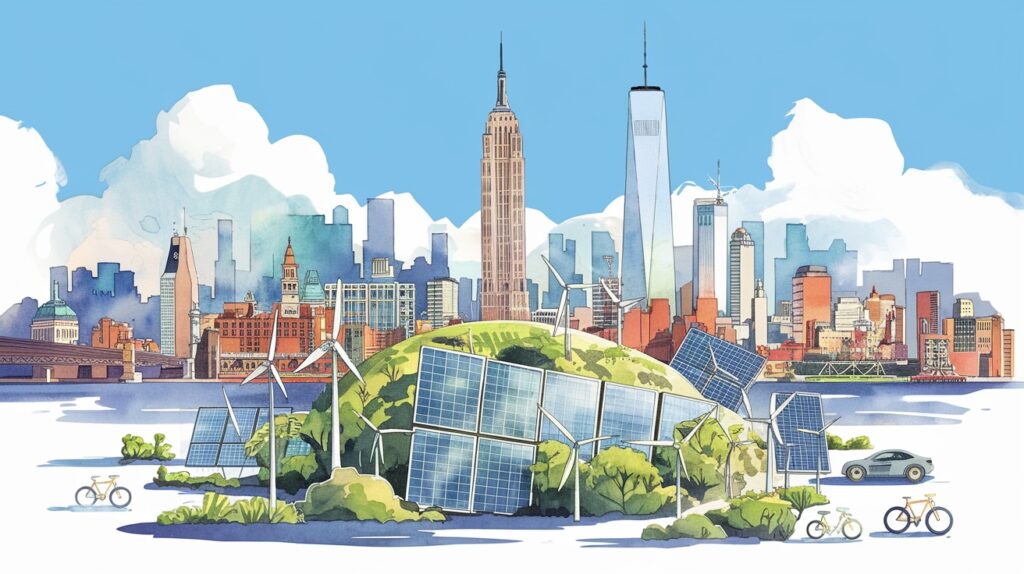The Coming Electrification of Everything
Andrew Beebe |

At Obvious Ventures, we believe stored electricity, increasingly derived from renewable sources, will entirely replace fossil fuels as the preferred method to power everything in our lives. From cars to scooters to boats to locomotives to industrial equipment, we are in the midst of a transition that will electrify everything previously driven by combustion.
There are two simple reasons we’ll make this change sooner than most people think. First, electrically powered things just work better. And people want things that work better. The second reason is really just a piece of the first. “Better” increasingly means “better forever.” That is, not just better in the moment for that use, but also better for our surroundings, our health, and the health of our planet.
But, at least for the short term, our climate will be served not simply by environmental motivations, but by the same relentless human force that created the challenges in the first place: the desire for more, faster, better. Ever-better technology will lead consumers, rather than idealists, to drive this electricity evolution.
Why now? Key trends emerging only in recent years have created the foundation for this evolution.
Electric solutions are finally better
Cutting-edge electric cars today are better than their gas-powered counterparts. They are both safer and easier to maintain than conventional cars. No trips to the gas station, no oil changes; the bulk of upkeep lies in tires and windshield wiper fluid. They also perform on the road, with better acceleration, torque and responsiveness than their conventional counterparts. The big downside (and it’s a big one) of range vs. cost will be overcome by multiple car companies in the coming years.
These benefits cross over to other categories as well. Companies like Proterra are developing in-city electric buses that are virtually silent, with zero emissions and the same simplified maintenance requirements that electric-car owners have come to appreciate. Adoption is relatively easy; defined routes, low speeds and designated charging stations are resulting in programs in an increasing number of U.S. cities.
Electric garbage trucks, delivery trucks, skateboards, bikes and scooters will soon dominate the streetscape. These products are a big improvement over their predecessors. They are silent, clean, fast and low-maintenance.
We’re seeing a big shift at home too. Hybrid hot water heaters, heat exchangers that handle both AC and heat, and induction cooktops are widely considered to be better performing, more durable, and easier to maintain than gas-powered options.
What’s to come? Well-funded startups and R&D efforts are underway for battery-powered boats, electric long-haul trucking and even airplanes — and of course, we will see home and commercial battery systems for backup proliferate as costs drop.
Battery costs drop and performance ramps
The key catalyst to allowing for the electrification of everything is improved battery technology. To move into widespread use, we need both lower costs and better density. As I wrote in my piece on lithium-ion batteries, we expect the cost curve for batteries over the next decade to mimic what we’ve seen in solar over the same time frame. If we’re right, we’re on the cusp of an order-of-magnitude reduction in the costs of energy storage in almost all shapes and sizes.
Although not tracking at the same rate as costs, energy storage density is increasing as well. Smaller batteries that last longer will power transport for longer range and less cost, pave the way for widespread home storage systems, and make the profound environmental hazards of two-stroke engines (lawn mowers, blowers, outboard motors, etc.) a thing of the past.
The distributed grid is on the rise
Homeowners around the world, particularly in the U.S., Europe and Japan, have decided not to wait for governments and utilities when it comes to clean energy. In ever-increasing numbers, they have used rooftop solar to become their own power producers and HAVE gone green in myriad distributed ways.
The companies that serve them have also taken notice. From Facebook to Google toApple to Amazon, the world’s largest companies are moving toward 100 percent renewable power.
Homes and businesses making their own power have the means and the opportunity to put it to good use, further fueling motivation to invest in electrically driven systems.
Finally, we’re seeing entire countries and states commit to moving closer to carbon-neutral—and of course others will follow. With these commitments comes a clear line of sight to a carbon-free environment in both the creation of energy and the ways in which we use it. The idea of burning anything to move ourselves, power our homes or drive our supply chains will be a thing of the past.
The clean electron era
Hospitals, transport, homes and businesses will increasingly generate and store power on-site. This will in turn grow the functionality of the grid and ensure full resilience after natural disasters like Hurricane Katrina. The insanity and shortsightedness of destroying a finite supply of fossil fuels by burning (rather than leaving them in the ground to minimize carbon release or maximizing their value for plastics, fertilizers, etc.) will be the predominant cultural view. Today’s first graders will get to college and shake their heads when we talk about the good old days of using repeated explosions under the hood of the car to get around.
Most of all, we will serve the greater good by aligning with, instead of opposing, the forces that sustain and define us: wind, water, solar and our own human nature to seek abundance for all.



